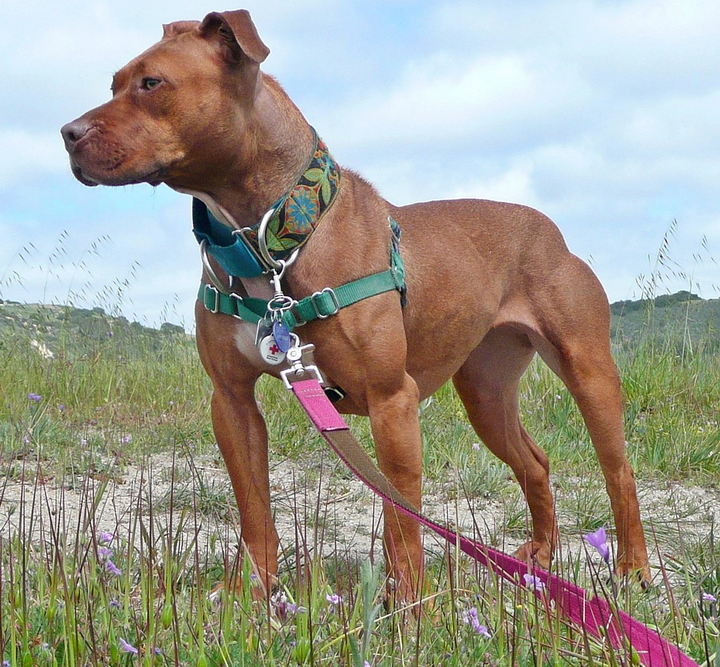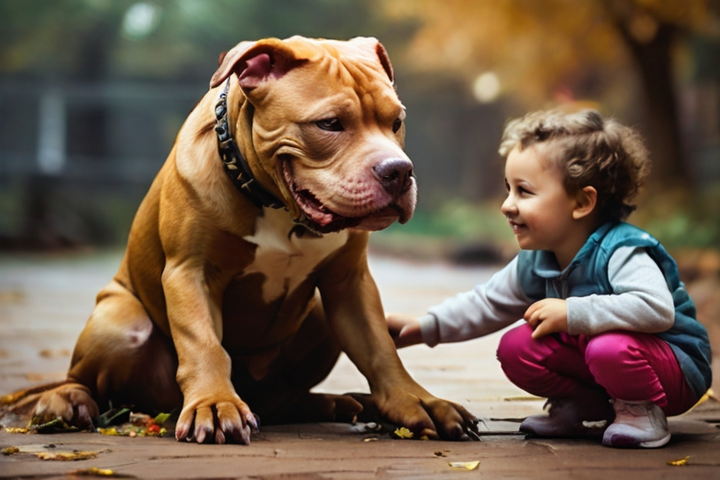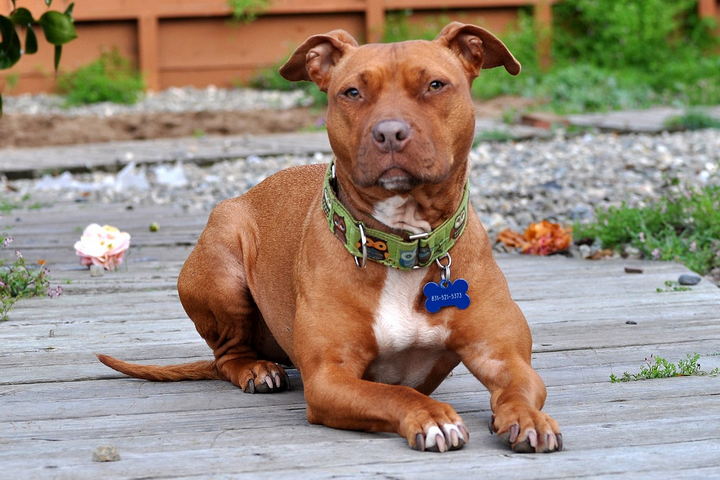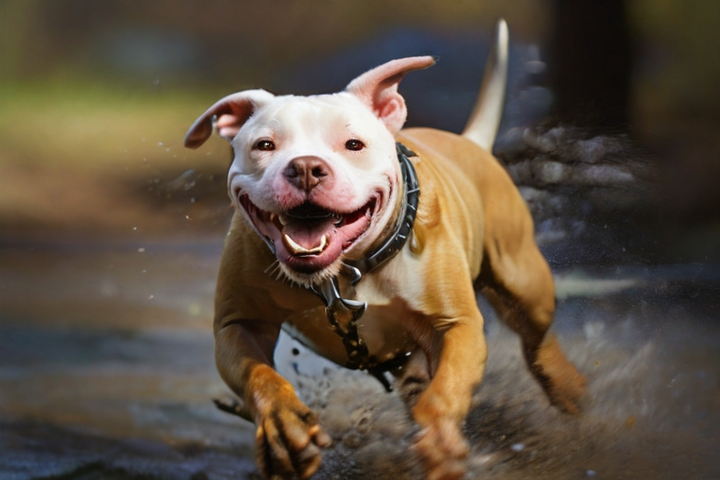Ah, Pit Bulls – the breed that captures hearts with their loyalty and strength, yet often leaves their owners scratching their heads over health concerns. It’s like solving a puzzle where the pieces are a mix of nutrition, exercise, and genetics. But worry not, because understanding your Pit Bull’s health doesn’t have to feel like decoding a mystery.
Pit Bulls, known for their muscular build and courageous spirit, are indeed a hardy breed. However, they’re not invincible. Like all dogs, they face their own set of health challenges. We often see proud Pit Bull parents seeking advice on how to tackle these issues and keep their furry friends happy and healthy. Well, that’s exactly what we’re here to discuss.
In this guide, we’ll unwrap each of these health concerns, offering practical tips and shedding light on how to prevent them. So, grab a cup of coffee, and let’s get started. After all, your Pit Bull isn’t just a pet; they’re family, and we all want the best for our family, don’t we?
10 – Skin Allergies
Skin allergies in Pit Bulls are as common as finding a squirrel in a park – pretty darn frequent. These allergies can turn your robust Pit Bull into a scratching, uncomfortable mess. The culprits? They could range from environmental allergens to food sensitivities. It’s like a detective game where you have to figure out what’s bothering your pup.
The first step is spotting the signs. Is your Pit Bull itching like there’s no tomorrow? Do they have red, inflamed skin or perhaps bald patches? These are your clues. The next step is finding the cause. This could involve diet changes, environmental adjustments, or a trip to the vet. Sometimes, allergy tests might be needed. It’s all about finding that itch-causing needle in the haystack.
Prevention and management can be a mix of science and art. For some, a simple change in diet to hypoallergenic dog food can be the magic potion. Others might need regular baths with medicated shampoo. The key is consistency and patience. Remember, you’re not just easing their discomfort; you’re boosting their overall well-being.
09 – Hip Dysplasia
Hip dysplasia in Pit Bulls isn’t just a health issue; it’s a quality-of-life matter. This condition, where the hip joint doesn’t fit the socket correctly, can range from a mild annoyance to a severe mobility hindrance. It’s like your Pit Bull has a loose hinge in their machinery.
Early detection is crucial. Watch for signs like difficulty in standing up, reluctance to jump or run, or a peculiar bunny-hop gait. If you notice these, it’s time for a vet visit. X-rays can confirm the condition, and though it sounds daunting, knowledge here is power.
Managing hip dysplasia is a combination of diet, exercise, and sometimes medication. Keeping your Pit Bull at a healthy weight reduces the strain on their joints. Gentle exercises, like swimming, can help maintain muscle strength without adding pressure. In severe cases, there are surgical options, but many Pit Bulls live full lives with non-surgical management.

08 – Obesity
Obesity in Pit Bulls is a sneaky enemy. It creeps up like an uninvited guest and refuses to leave. Excess weight can lead to a slew of health issues, from joint problems to heart disease. It’s not just about less cuddle to hug; it’s a serious health risk.
Preventing obesity is about balance and consistency. A balanced diet and regular exercise are the cornerstones. Think of it as a health savings account – what you put in now pays off later. Measure their food, limit treats, and make exercise a daily ritual. It’s not just about walks; get creative with activities that keep both their body and mind active.
If your Pit Bull is already tipping the scales, don’t despair. Weight loss in dogs is a slow and steady journey. Consulting with a vet to devise a weight loss plan tailored for your furry friend is a great starting point. Remember, each pound lost is a victory!
07 – Heart Disease
Heart disease in Pit Bulls can sound like a ticking time bomb, but it’s not a death sentence. Awareness and proactive care can make a world of difference. Types of heart disease can vary, from congenital defects to age-related wear and tear. It’s like ensuring your car’s engine runs smoothly for the long haul.
Symptoms might include coughing, difficulty breathing, or reduced exercise ability. If you notice these, it’s vet time. Early detection and treatment can significantly improve quality of life. Treatment might include medication, dietary changes, or in some cases, surgery.
Prevention leans heavily on a healthy lifestyle – a common theme, isn’t it? A balanced diet and regular exercise go a long way. Also, regular vet check-ups can catch early signs, so you’re not left guessing.

06 – Hypothyroidism
Hypothyroidism in Pit Bulls is like a slow drain on their energy. This condition, where the thyroid gland doesn’t produce enough hormones, can affect everything from their metabolism to their mood. It’s as if someone turned down their energy dial.
Symptoms can be subtle – weight gain, lethargy, skin problems, and a dull coat. It’s easy to miss or dismiss these signs, but a simple blood test can confirm the diagnosis. The good news? Once diagnosed, hypothyroidism is manageable.
Treatment usually involves daily medication to replace the missing hormones. It’s not a cure, but it’s a control. With proper treatment, your Pit Bull can lead a normal, happy life. It’s about turning that energy dial back up.
05 – Cataracts
When it comes to cataracts in Pit Bulls, it’s like they suddenly need tiny doggy glasses. This condition, leading to a cloudy film over the eye lens, can range from a minor nuisance to a cause of significant vision loss. It’s as if their world gradually turns into a foggy morning scene.
Early detection is key. Symptoms can include a noticeable cloudiness in the eyes, clumsiness, or a reluctance to jump or navigate stairs – it’s like they’re navigating a misty path. Regular vet check-ups are crucial, as they can catch these signs early on.
Management and treatment depend on the severity. In mild cases, no treatment may be necessary, but in more severe instances, surgery can be a real game-changer. Post-surgery, most dogs regain much of their lost vision, like a curtain lifting on a cloudy stage. It’s about bringing clarity back to their world.

04 – Mange
Mange in Pit Bulls isn’t just an itch; it’s a full-blown skin drama. Caused by tiny mites, mange can lead to severe skin irritation, hair loss, and sometimes infections. It’s like their skin is throwing a tantrum because of uninvited microscopic guests.
Diagnosis involves a simple skin scraping test. If confirmed, the treatment plan might include medicated baths, topical treatments, or oral medications. It’s about evicting those mites and soothing your dog’s skin.
The good news is, with treatment, mange is usually conquerable. Think of it as a battle where you and your vet are the knights in shining armor. Regular grooming and maintaining a clean environment can also help prevent future flare-ups. It’s all about keeping those pesky mites at bay.
03 – Parvovirus
Parvovirus in Pit Bulls is like an unwanted intruder, sneaky and potentially dangerous. This highly contagious virus attacks rapidly dividing cells, like those in the intestines and bone marrow. It’s as if a microscopic burglar breaks into your dog’s internal systems.
Symptoms include severe vomiting, diarrhea, lethargy, and loss of appetite. If you spot these, it’s an immediate trip to the vet. Time is of the essence with parvo. Early and aggressive treatment can be a lifesaver, literally.
Prevention is straightforward – vaccination. Think of it as a security system against this viral intruder. Regular vaccinations, especially in puppies, are crucial. It’s about keeping that invisible shield strong and intact.

02 – Dental Disease
Think of dental disease in Pit Bulls as a silent creeper affecting more than just their pearly whites. It can lead to serious health issues if left unchecked. It’s not just about bad breath; it’s about overall health.
Early signs include bad breath, plaque build-up, and a reluctance to eat hard foods. Regular dental check-ups and cleanings are vital – it’s like taking your car for a service to keep everything running smoothly.
At home, regular brushing and dental chews can work wonders. It’s about integrating dental care into their daily routine. A healthy mouth leads to a healthier body. It’s not just about flashing a winning smile; it’s about adding years to their life.
01 – Ear Infections
Ear infections in Pit Bulls are like those annoying earworms, but more literal and much less fun. Often caused by allergies, bacteria, or yeast, these infections can make your Pit Bull shake their head or scratch their ears incessantly. It’s like they’re trying to shake off an invisible annoyance.
Spotting an ear infection early is crucial. Symptoms include redness, odor, or discharge in the ear. Regular ear checks and cleaning can prevent a lot of these issues – it’s like routine maintenance for their auditory health.
Treatment usually involves ear drops or cleaning solutions. In more severe cases, oral medications may be required. It’s all about restoring peace and quiet in their ear canals. Regular cleaning and grooming can help keep these infections at bay, ensuring your Pit Bull’s ears are only filled with sweet sounds.
Wrapping It Up: Ensuring a Happy, Healthy Life for Your Pit Bull
As we wrap up our deep-dive into the 10 Most Common Health Issues in Pit Bulls and Prevention Tips, it’s like we’re closing a valuable handbook filled with secrets to keeping our beloved Pit Bulls healthy and happy. We’ve navigated through various health concerns, from the irksome skin allergies to the stealthy threat of parvovirus. It’s been an enlightening journey, shining a light on what lurks in the shadows of canine health.
Remember, being proactive is key. Regular vet check-ups, staying vigilant for early signs of issues, and maintaining a healthy lifestyle for your Pit Bull are your best defenses. It’s about being the guardian they need and deserve. This includes balanced nutrition, regular exercise, and of course, heaps of love and attention. Your Pit Bull isn’t just a pet; they’re a part of your family, a companion through thick and thin.
So, keep this guide handy. Refer back to it when you see your furry friend itching a bit too much or if they seem off their game. Early intervention can make all the difference. And remember, every step you take towards understanding and addressing these health issues is a step towards a longer, joy-filled life with your Pit Bull. After all, isn’t that what every pet parent wants?
To all the Pit Bull parents out there, you’re doing a great job. Keep up the good work, and here’s to the health and happiness of your four-legged family member!
The Fascinating World of Pit Bulls: Unveiling Their Rich History and Traits
Pit Bulls, often surrounded by misconceptions and myths, hold a fascinating place in canine history and culture. These robust dogs, known for their strength and loyalty, have a story that’s as compelling as their personality.
A Journey from England to America
- Origins: Pit Bulls trace their lineage back to England, where they were bred as a cross between English Bulldogs and various terrier breeds. They made their way to the U.S. with early settlers, intertwining their story with American history.
- Roles in History: Initially trained for bear baiting and later for dogfighting, Pit Bulls have transformed their image over time. They served as mascots for the U.S. Army during World War I and were depicted in comic strips and advertisements in the early to mid-1900s.
Misconceptions and Realities
- Temperament and Affection: Despite a background in fighting, aggression towards humans was historically seen as undesirable in Pit Bulls. They are known for their affectionate nature, even being nicknamed “nanny dogs” for their kindness towards children.
- Strong but Not Dangerous: A common myth about Pit Bulls is that they have “locking jaws”; however, this is not anatomically accurate. Their bite is strong, but they do not have a unique locking mechanism.
- Intelligence and Trainability: Pit Bulls score exceptionally well in temperament tests, outperforming many other breeds in terms of calmness and non-aggressiveness.
Unique Traits and Care
- Physical Characteristics: Known for their muscular build, Pit Bulls typically stand around 43 to 48 cm tall and weigh between 14 to 41 kg. They are also excellent climbers, needing tall fences to keep them safely contained.
- Popularity and Misidentification: Pit Bulls represent a significant portion of pet dogs worldwide, with an estimated two million in the U.S. alone. However, they are often misidentified, leading to misconceptions about their behavior.
Overcoming Challenges
- Breed-Specific Legislation (BSL): Due to their past association with violent activities, Pit Bulls face restrictions in some areas. It’s essential to check local laws before deciding to own a Pit Bull.
- Celebrity and Historical Figures: Many well-known personalities, including Theodore Roosevelt and Helen Keller, owned Pit Bulls. These dogs have been featured in media and pop culture, from movies to magazines.
Understanding Pit Bulls requires delving into their rich history and recognizing their true nature beyond the myths. They embody resilience, affection, and loyalty, making them cherished companions for those who understand and appreciate their unique qualities.


